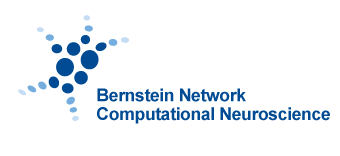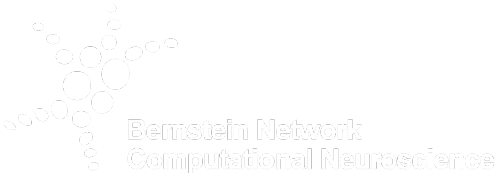Learning to see: A mix of nature and nurture
A clear vision of learning - international research team highlights brain's adaptability

The brain's response changes when an animal that had previously closed its eyes (left) now opens its eyes for several days (right). After experience, the same groups are active during repeated presentation of the same stimulus, a reliable response arises, and the stimulus is recognized. A mathematical model describes this process as in a marble run: If marbles (processing of the image stimuli) are placed in an inappropriate place, it is unclear where they end up on the path (neural network). With experience, this interaction improves; Input and network coordinate and reliable answers are created. (Fig.: Sigrid Trägenap)
The developing brain is prepared to see even before the eyes are opened for the first time: Certain patterns are predetermined in the wiring of neurons. However, it takes a few days of visual experience to restructure the networks so that a consistent visual impression is created. Researchers from FIAS published these findings in Nature Neuroscience together with colleagues from the Max Planck Florida Institute.
How newborns learn to see is the central question of the research by Sigrid Trägenap, a doctoral student in the group of FIAS Senior Fellow Matthias Kaschube. The brain is already pre-structured for visual stimuli before the eyes open. But what happens when real information hits these circuits when you first open your eyes? Previous measurement methods concluded that the responses of the young brain were weak and unorganized. However, new investigations at FIAS show that the neuronal responses to visual stimuli are already surprisingly structured. They initially react very variably to new stimuli. It takes a few days for the same stimulus to leave a reliable response trace in the neurons. Only then is an image “recognized”.
At FIAS, Trägenap evaluated the data collected by David Whitney from David Fitzpatrick’s research group at the Max Planck Florida Institute for Neuroscience in Jupiter (Florida, USA). They work with ferrets that do not open their initially closed eyes until a month after birth. The researchers presented them with black-and-white images on screens and used fluorescence microscopes to observe which neurons were active. Trägenap evaluated the extremely complex data at FIAS and created a mathematical model to describe it.
As long as the eyes are closed, non-specific patterns form in the visual cortex, so that it is not possible to determine which image was presented. Only after the eyes open do the reactions become reliable and show a preferred activity. From the data and elaborate modelling, Trägenap concludes that the pre-structured neural networks have a kind of “expectation” – but that these do not completely coincide with the actual image stimulus. After a few days, a mixed form is formed, in which the old structure changes due to the new impulse: the neuron connections rearrange themselves and adapt to the new visual stimuli.
Modern sensors allow brain functions to be examined in short time scales of the blink of an eye and at tiny distances – as thin as cling film. “The patterns measured in this way can no longer be manually evaluated” says the doctoral student, explaining the importance of her elaborate computer calculations. From the available data, she can evaluate the changes in the brain in detail and simulate models with the computer. It remains to be clarified whether these findings apply to all brain structures – are color, sound, and other sensory impressions also shaped in this way? “And we can use the findings to test whether AI systems also learn faster if they structured like the newborn brain,” explains Trägenap. Her research suggests that the brain can always learn new things based on old knowledge. “Try out, gain experience, and find your own ansatz for optimal learning,” advises the neuroscientist based on her findings – and that for a lifetime: processing new things and adaptation is always possible in brain structures.





